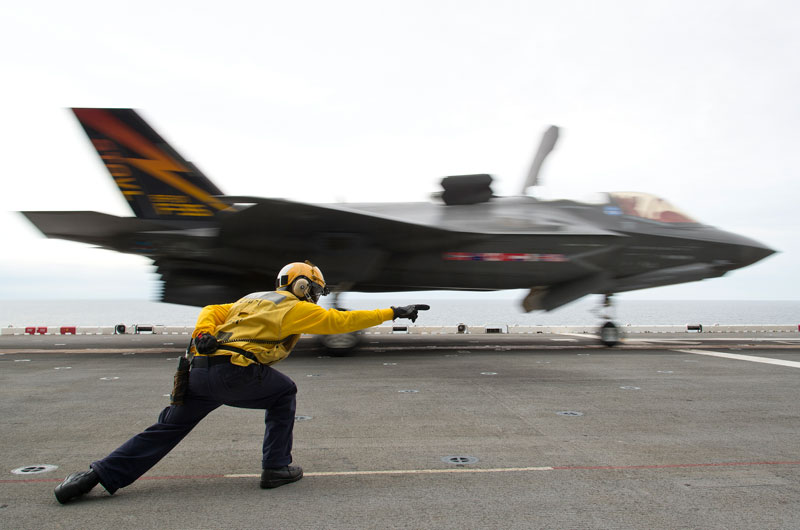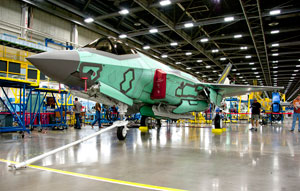

There have been some wild assertions about F-35 unit cost recently. See the Lockheed claims as reported in Breaking Defense, Defense News and others that we should expect F-35A costs to be $85 million in 2019. None of these articles acknowledged that there are ways to measure F-35 unit cost other than by mouthing Lockheed and/or Joint Program Office prognostications for the future. Winslow Wheeler, Director, Straus Military Reform Project, CDI at the Project of Government Oversight (POGO) claims these predictions do not conform with the actual procurement of costs reflected in the real numbers listed in the 2014 budget spending.
“Try instead, empirical data from as recently as last month from sources that typically work hand-in-glove with the Pentagon.” Wheeler wrote in his blog. “They would be the House and Senate Armed Services Committees. Their National Defense Authorization Act (NDAA) was squirted through the Senate and signed into law on December 26. On questions like funding for high priority weapons, like the F-35, they virtually never act without consulting closely with the Pentagon, even if they don’t always cough up every penny requested. For their 2014 bill, they did indeed take a few nicks out of the F-35 program, but the numbers, released in their “Joint Explanatory Statement” for the 2014 NDAA, give a more revealing view of F-35 unit costs than what Lockheed and some uninquisitive articles asserted at the end of 2013.”
The cost estimates in the NDAA for the cheapest version of the F-35, the Air Force’s F-35A, are the following. (Note these costs as just for production and do not include R&D.)
“The 2014 procurement cost for 19 F-35As will be $2.989 billion. However, we need to add to that the “long lead” money for the 2014 buy that was appropriated in 2013; that was $293 million, making a total of $3.282 billion for 19 aircraft in 2014. The math for unit cost comes to $172.7 million for each aircraft.
To be fully accurate, however, we should add the additional procurement money authorized for “modification of aircraft” for F-35As for 2014; that means $158 million more, bringing the total unit production cost to $181 million per copy.
None of that includes the 2014 R&D bill for the F-35A; that was $816 million; calculate that in if you want; I choose not to” Wheeler added.
The Marine Corps and Navy versions are a little pricier.
For the Marines B, or STOVL, model, the authorized 2014 buy is six (6) aircraft for $1.267 billion in 2014 procurement, $106 million in 2013 long lead money, and $147 million in 2014 aircraft procurement modifications. That calculates to $252.3 million for each one, according to Wheeler.
For the Navy’s C, carrier-capable (but not yet), model, we get four (4) aircraft for $1.135 billion, plus $32 million in long lead, plus $31 million in modifications. That means $299.5 million for each one.
“Actual F-35 unit costs are today multiples of what Lockheed says they will be.” wheeler asserted, “If you think it is reasonable to expect them to plummet to the $85 million Lockheed glibly promises (thanks to the ubiquitous “learning curve” and other manipulations)” please consider a somewhat different analysis, also in Time, available here and here.” Wheeler wrote.
The cost data from the 2014 NDAA is not the last word. Authorization bills actually have little to do with real money, but the House and Senate Armed Services Committees like to conform their bill to whatever the latest DOD dat

a happens to be. “Keep an eye out for the 2014 appropriations bill, due out as early as next week. That is the real money bill, and it will contain not just the latest word on F-35 costs but all the money the 2014 F-35 program will see. My guess is that it will differ little from the NDAA, but if the numbers are different, they will likely show a cut to both total dollars and the number of aircraft bought. That is not good news for F-35 idolaters: cuts to the F-35 top line will almost surely mean deeper proportional cuts to the number bought, and the unit cost will go up.” Wheeler warned.
“Lockheed claims on F-35 unit costs are easy fodder for ridicule, but for some reason the press I have seen reporting on those claims did not report any data from an available alternate source.” claims Wheeler, “Because they didn’t, I am.”
Wheeler recommends keeping an eye out for the actual F-35 costs in the 2014 appropriations bill and how the press reports on them. “After that, keep an eye out for what DOD puts in its 2015 budget request for the F-35. It is a real question whether those data will calculate to a lower unit cost for the F-35 or a higher one, learning curve prognostications notwithstanding.”
“Treat Lockheed’s predictions with all the respect they deserve. Consider similarly press reports on those predictions that do not give you more reliable data or any wider perspective.” Wheeler concludes.
















